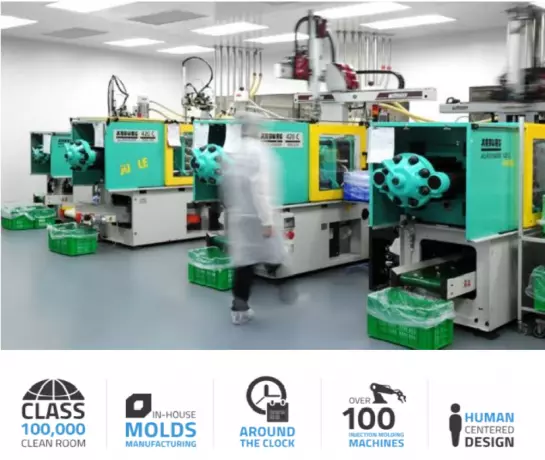
Injection molding advantages for medical...
We have been successfully developing and manufacturing plastic parts and assemblies for medical tech...
Portal and digital medical technology fair of the largest MedTech cluster in Germany

Injection molding advantages for medical...
We have been successfully developing and manufacturing plastic parts and assemblies for medical tech...

Medical Clean room plastic injection
Medical technology clean room injection molding We manufacture plastic components in the clean ro...

There are a number of benefits to plastic injection molding. The production of millions of parts from a single mold is more cost-effective and faster than conventional manufacturing methods. In addition, custom molds are easier to produce, and the lost time associated with the initial investment is often offset by the increased profitability of plastic part production. The process is also more flexible, which makes it ideal for specialized needs. Some of the advantages of plastic injection molding include the ability to customize shapes and sizes, which makes it ideal for medical applications.
Injection molding is particularly useful for medical devices, such as prosthetics. Such products need to be sterile and contaminant-resistant. In addition, they need to be small, portable, and meet aesthetic standards. Injection-molded medical devices can be made of various colors and textures, and they are also easier to sterilize and maintain. This means that they can be used more frequently in medical procedures and provide greater patient comfort.
The process is ideal for creating bio-implants and cases for medical devices. The ability to maintain a temperature of 100 degrees Celsius is important when creating bio-implants. As such, plastic injection molding is the perfect solution for medical devices. These components are made using materials that are sterile and contaminant-resistant, and can be manufactured at low cost. Moreover, they are more durable than other types of plastics. There are many advantages to medical injection molding.
The plastic injection molding process has increased patient safety. Studies have shown that patients who undergo orthopedic surgery with a plastic-to-metal knee prosthesis have fewer infections. In fact, patients with a metal-to-plastic knee prosthesis are 20 percent more likely to develop post-operative infections than those with plastic-to-metal implants. This indicates that medical devices made of plastic injection molding contribute to positive outcomes. These medical devices are generally made from thermoplastic materials such as polycarbonate.
In the early days of the plastic injection molding industry, the production of molded items was accelerated by World War II. The need for mass-produced products caused a huge demand for plastic goods. In 1946, an American inventor, James Watson Hendry, developed the screw-injection machine that allowed precise control over speed and mixing of materials. In the 1970s, Hendry developed a gas-assisted injection molding process. This process allowed the creation of complex hollow articles.
The plastic injection molding process is ideal for complex parts. The process is a cost-effective way to produce complex plastic parts. For example, some medical plastics have antimicrobial properties, while others have autoclaving compatibility. A high degree of accuracy in the finished product is essential in medical devices. The quality of plastic injection molds will determine how durable the products are. Regardless of the type of plastic, it is possible to create a number of different shapes.
Become a digital exhibitor yourself in the online portal of the largest and best-known MedTech cluster region in Germany and inform the world of medical technology about your products and services as well as about news, events and career opportunities.
With an attractive online profile, we will help you to present yourself professionally on our portal as well as on Google and on social media.